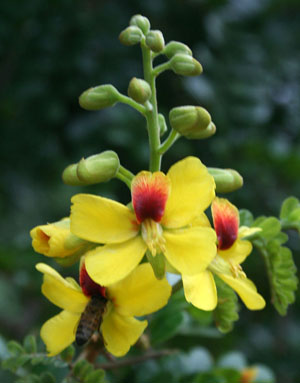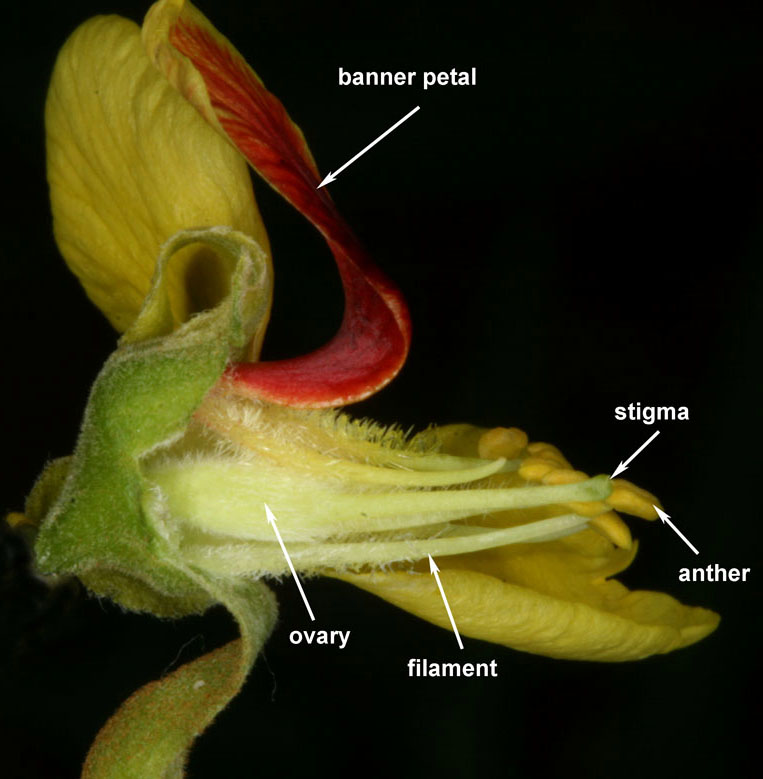The Tree That Gave Brazil Its Name
Posted in Interesting Plant Stories on February 19, 2014 by Scott Mori
Scott A. Mori, Ph.D., is the Nathaniel Lord Britton Curator of Botany at The New York Botanical Garden. One of his specialties is the Brazil nut family.

Pau brasil (Caesalpinia echinata), a member of the legume plant family and the national tree of Brazil, has played an important role in the history of that country. Pau is the colloquial name for árvore (or tree), and the red sap it exudes when the trunk is cut has the color of a burning piece of charcoal (brasa in Portuguese). So pau brasil is translated into English as the Brazil tree. According to some historians, this common name was adopted from the plant as the name of the country, the largest and most biodiverse in South America.
Brazil (spelled Brasil in Portuguese) was discovered in 1500 by the Portuguese explorer Pedro Álvares Cabral, who landed near the present-day city of Santa Cruz de Cabralia in the state of Bahia. At that time, pau brasil was plentiful in the coastal forests of Brazil. The sap was economically important because it was used for dying cloth, but today the tree is best known as the source of highly prized timber used to create bows for string instruments such as violins and cellos.

Throughout its native range, large pau brasil trees are hard to find because of deforestation for cattle ranching and for sugar cane and eucalyptus plantations. The coastal forests have been reduced in some areas to as little as five percent of their original extent. In addition, because of the high price that violin bows bring on the market, this magnificent tree has been selectively cut throughout its range. Fortunately, it is cultivated as an ornamental and planted as part of reforestation projects so its beautiful flowers can still be appreciated.
The accompanying photographs of flowering plants in cultivation were taken at the Rio de Janeiro Botanical Garden.

Cabral portrait courtesy of Wikimedia Commons.

